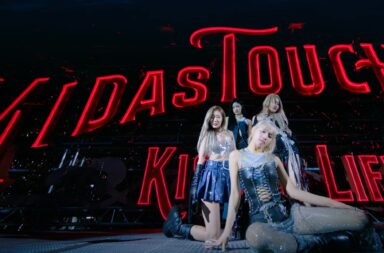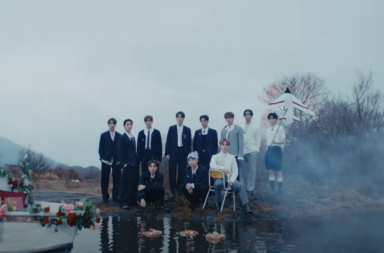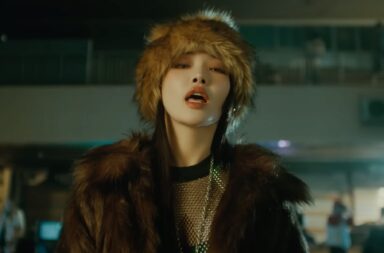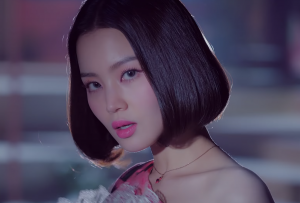
Core to any piece of music is the audience’s experience. By the time music is made, how it’s made frankly seldom matters. It’s all about how the end product resonates with the audience. In K-pop, every facet of a comeback’s multimedia package contributes to fulfilling this purpose, and with varying degrees of success, we get to see marketable, simple pieces and grandiose, complex allegories. Lee Hi has been able to achieve both on a single track. By differentiating the purpose of each facet of “No One” — the lead song of an album delayed in the pursuit of the perfect title track, 24°C —she has been able to make a track that’s profound and widely comprehensible all the same. Likewise, the MV is a complex of symbols, but presents a clear, surprising departure from the song’s lyrics, emphasizing independence and stoicism even in the face of loneliness.
While Lee Hi has explored quirkiness with “My Star” and poignancy with “Breathe”, “No One” delves elsewhere, sourcing inspiration from all that’s popular in K-pop right now: hints of hip-hop and tropical music. Featuring iKon’s B.I, “No One” throws in everything but the kitchen sink: synths reminiscent of Sunmi’s “Siren” drives the melody, tropical marimbas ground the low-end, and metal crashes add sparkle. It’s a well-crafted melody, and while it’s not innovative, it doesn’t bore. Somehow, it even maintains instrumental cohesion by itself, despite the disparity that comes with Lee Hi’s vocals.
In previous tracks, her performances showcased her soulful voice with R&B-like runs, and while she shouldn’t be held to a single style, her sonic signature is absent from “No One”. In a 2019 K-pop kind of way, digital instruments take over, forcing the former centerpiece of her songs — her voice — to become accessorial. By extension, it becomes impersonal, an attachment to something of greater importance, and a part anyone else can play. It doesn’t help that she sings without much energy over a track that demands it. In her blossoming as an artist, however, she doesn’t lose all that makes her appealing.
In pieces, “No One” fulfills parts of its purpose: to be appealing. The lyrics of “No One” are markedly simple, and here that’s just fine. They take a conventional approach, having Lee Hi longing for love and denouncing loneliness, exchanging depth for accessibility; she pleads companionship in a superficial way:
I want to get rid of this loneliness
I don’t wanna be alone anymore
Much of what she experiences possibly comes from the “dating bans” of many agencies, including YG Entertainment, which she alluded to in a recent interview. Honest lyric writing matters, and thankfully her honesty transcends the lyrics. After all, part of Lee Hi’s image as an artist is the thorough exploration of simple themes, even in B-sides.
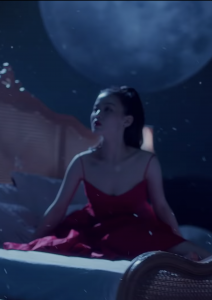
For 24°C, Lee Hi has chosen to make “No One” trespass the boundaries of the different mediums it’s in. Here, the music video becomes a centerpiece. Rich in astrological symbolism, it sways between forests, ballrooms, and deserts. Its presentation doesn’t look for realism, but rather, introduces elements which complete the lyrical journey started by the song. It goes for an artificial look, prioritizing symbolism, and pulls it off while being very dynamic. It’s colorful and enjoyable which is good for its standing as an independent piece.
Following the foundation made by the lyrics, the MV spearheads its continued narrative by presenting symbols which stand for Lee Hi’s negative perspective on loneliness: the moon, darkness, and cold colors. Moody lighting, accompanied by shades of blue, envelopes her room while the moonlight strikes through the window. She’s seen in parallel shots with the moon, a lonely girl in a room and a shining figure alone in an immense sky. Towards the end of the scene, transporting the MV outside of the foundation made by the lyrics, she opens a door whose handle is the moon, alluding to the romantic line “bring me the moon down”. In a clever use of a double metaphor, she grabs the moon and grounds herself, signaling that she’s okay being alone, a transition which introduces what the lyrics do not reveal about her journey.
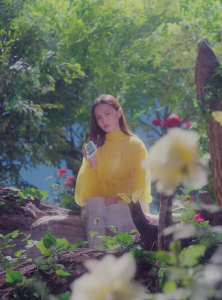
When Lee Hi crosses the door, other symbols to be attached to her new perspective emerge: light, warm colors, and mirrors. Light envelopes the forest, and in the same way darkness stood for her mood, light reveals a newfound peace of mind. This forest scene starts linking mirrors as the source of light, of her wellness. Thereafter, in a scene back in her room, she’s seen looking at herself in a mirror; if this is assumed to be an act of introspection, then this suggests her wellness in her ability to realize that she’s enough.
In her room, the mirror with her reflection pans to paintings of… cats. Despite being a slightly odd choice, Lee Hi is likened to their image by shots of her acting in parallel with cats. Cats are widely recognized as figures of companionship, and she’s able to become her own cat. In the ballroom scene following, she radiates confidence and is seen dancing with a cat. However odd, she swings with herself in between everyone who has a partner — but as she smiles, she tells us that’s okay.
A part of her, however, is still stuck on craving someone. The last scene starts transporting the viewer out of a TV screen, portraying Lee Hi in front of it, having watched the journey. She feels alien being okay, and this final layer is remarkable in extending the profoundness of her feelings; her multifaceted journey radiates humanity.
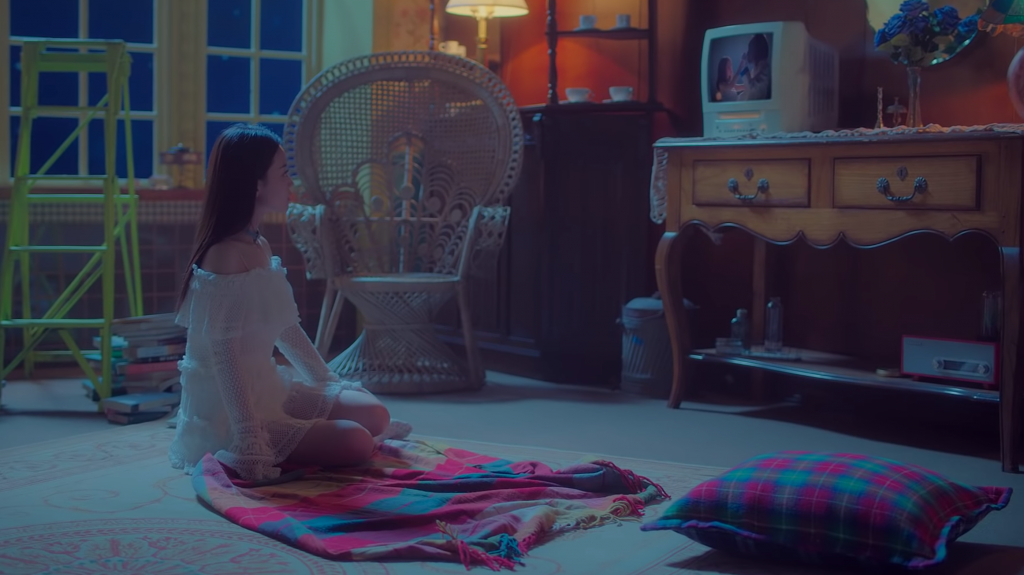
Beyond, other scenes throughout the rest of the MV, in between the main drivers of the narrative, keep adding layers to Lee Hi’s journey. The scene I find most dazzling is that of B.I, yet I didn’t catch its importance until an editor pointed it out to me: he holds a rose akin to that in The Little Prince. As he handles it, he appreciates it but feels trapped all the same, similar to how the Little Prince felt about the rose. In the book, he leaves as he cannot handle her vanity any longer. Perhaps the scene which precedes it, the forest, envelopes Lee Hi in nature to make the link between the rose and her clear. It’s admirable that Lee Hi can be honest about her mistakes; it makes “No One” that much more touching.
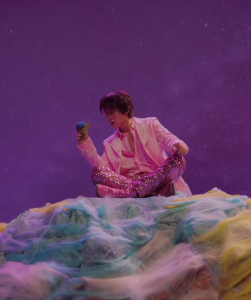
The honesty that permeates the mediums of “No One” make it truly unique. The lyrics introduce a story and the music video amplifies it: she has “No One”, but she also needs “No One”. The track narrates a story created through assimilar mediums in a way I had not seen before. By itself, without analysis, the MV isn’t all that effective, serving imagery that, out of context, becomes hackneyed. Similarly, Lee Hi’s lyrics alone work out to be empty and superficial. Together, however, the lyrics give a base for the MV to expand upon; they create a hollow basket upon which the MV allows Lee Hi to show her struggles and her journey as two independent but interconnected pieces. It’s artful and it’s efficient. Neither of the mediums becomes overwhelmed with content and artistry, allowing for marketability, but they hold meaning for those who look. Both are a true statement to Lee Hi’s artistry.
(Lyrics via Genius, Images via YG Entertainment)
